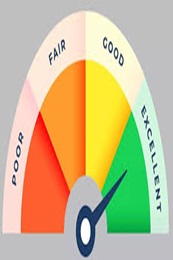Current Account 101: Meaning, Features and Types
April 15, 2025

Banks offer different types of interest-bearing accounts – Savings Accounts, Fixed Deposits, Recurring Deposits, etc. All these accounts offer interest rates, which contributes to your financial growth. However, there’s another type of account- Current Account – an account designed to simplify day-to-day business transactions.
Read this blog to understand how a Current Account works, its types, features, and more.
What is a Current Account?
A current account is a type of account designed primarily for businesses, entrepreneurs, and professionals who engage in frequent and high-volume financial transactions. Unlike savings accounts, current accounts do not typically earn interest but offer features such as higher deposit and withdrawal limits, overdraft facilities, and seamless fund transfers.
Current accounts are ideal for managing day-to-day business operations, including payments to vendors, payroll processing, and receiving customer payments. They also come with additional tools like cheque books, debit cards, and online banking for convenience.
Key benefits of a current account include faster transaction processing, higher transaction limits, and enhanced banking services like trade finance and cash management. However, they may require maintaining a minimum balance, and non-maintenance could result in penalties.
Types of Current Accounts
Ujjivan Small Finance Bank offers 6 types of current accounts meticulously designed to meet your unique business requirements.
1. Regular Current Account
The Regular Current Account is designed to make business banking simple and convenient.
What you get:
- Free and unlimited transactions at Ujjivan SFB ATMs
- Zero additional charges for non-home branch transactions
- Flexible cash deposit limit across branches
- Net Banking and Mobile Banking facilities
- Doorstep cash and cheque pick-up facility (available in select cities)
- 24/7 customer care in your preferred language
2. Premium Current Account
Enjoy higher ATM withdrawal limit and superior customer service with Ujjivan’s Premium Current Account.
What you get:
- Enhanced shopping and ATMs withdrawal limit of ₹1 lakh
- Up to 50 Free cheque leaves per quarter
- 50 free cash withdrawals every month at Ujjivan SFB branches
- RuPay Classic Debit Card with six free transactions at non-bank ATMs
- Different POS solutions like Android POS terminals, MPos, and paper and digital GPRS
3. Business Edge Current Account
Flexible and convenient, the Business Edge Current Account is designed to supercharge your business activities.
What you get:
- Feature-packed RuPay Platinum Debit Card
- Unlimited free transactions across Ujjivan ATMs
- 1 complimentary lounge access per quarter
- 10 free transactions/month at other bank ATMs
- Enhanced daily ATM transaction limit up to ₹1.5 lakh
4. Privilege Current Account
With the Privilege Current Account, you can customise your cash deposit limit, thanks to Flexi Now and Flexi Next facilities.
What you get:
- RuPay Platinum Debit Card that comes with multiple offers, discounts and insurance facilities
- 200 free cheque leaves per quarter
- Unlimited cash withdrawal at any branch
- 24/7 customer service in your preferred language
- Up to 9,999 transactions at a time
5. Maxima Current Account
Maxima Current Account offers more than just business banking. Enjoy higher transaction limit, real time status check of Debit Card/cheque, and more.
What you get:
- Define your own cash deposit limit with Flexi Next / Now*
- Higher ATM withdrawal/POS transaction limit of ₹5 lakhs/day*
- Beyond Banking - Account Services, Tax payment, HR Payroll etc.*
- Up to 9,999 transactions at a time
Features and Benefits of Current Account
1. Higher Transactions Limits
Current accounts allow enhanced deposit and withdrawal limits, making them ideal for businesses with high transaction volumes.
2. Cheque and Demand Drafts
Businesses can issue cheques and demand drafts for seamless payments to suppliers and vendors.
3. Multi-Location Banking
Current accounts support banking across multiple branches, making it easy for businesses with pan-India operations to manage finances.
4. Ease of Online Banking
Current accounts come with robust online and mobile banking features, enabling 24/7 access to funds, bill payments, and fund transfers.
5. Efficient Business Operations
Current accounts streamline financial transactions, ensuring smooth day-to-day operations.
6. Enhanced Liquidity
The overdraft facility ensures liquidity, allowing businesses to meet urgent financial requirements.
7. Improved Financial Tracking
Detailed account statements and transaction records help businesses monitor cash flows effectively.
8. Multi-Channel Access
Current account holders can access banking services through ATMs, mobile banking apps, and internet banking, ensuring convenience.
9. Customised Banking Solutions
Many banks offer tailor-made current account solutions for specific industries, providing additional benefits like waived fees or dedicated relationship managers.
10. Facilitates Bulk Payments
Current accounts allow bulk payments such as salaries, supplier payments, and utility bills efficiently.
Final Thoughts
A current account is essential for businesses, professionals, and entrepreneurs who need a banking solution tailored to frequent and high-volume transactions. With features like unlimited withdrawals, overdraft facilities, and multi-location banking, it ensures financial efficiency and convenience. Choosing the right current account with features suited to your business needs can significantly enhance operational productivity.
Simplify your business transactions with Current Account. Open a Current Account with Ujjivan Small Finance Bank and enjoy multiple benefits.
FAQs
1. What is the primary purpose of a current account?
A current account is designed for individuals and businesses to manage frequent and high-volume financial transactions seamlessly.
2. Can I earn interest on a current account?
No, current accounts typically do not earn interest as they are meant for transactional purposes rather than savings.
3. What is the difference between a current account and a savings account?
A savings account is for personal savings and earns interest, while a current account is for businesses with unlimited transactions and no interest.
4. Is maintaining a minimum balance mandatory for current accounts?
Yes, most banks require current account holders to maintain a minimum balance, failing which penalties may apply.
5. What are the charges associated with a current account?
Charges may include non-maintenance fees, cheque issuance fees, overdraft interest, and cash handling fees, depending on the bank.
6. Can I open a current account in multiple cities?
Yes, current accounts allow multi-location banking, making it easy to operate across various cities and branches.
Latest Blogs

Telangana Housing Board & KPHB Colony: A Guide to Affordable Urban Housing in Hyderabad
March 14, 2025
As Telangana continues its rapid urbanisation journey, two key housing entities—Telangana Housing Board (THB) and Kukatpally Housing Board Colony (KPHB)—have played critical roles in shaping the state's real estate ecosystem.

Does Checking CIBIL Score Frequently Lower Your Credit Points?
April 07, 2025
Imagine you're planning to apply for a home loan, a credit card, or even a car loan. Naturally, you want to ensure your CIBIL score is in good shape before proceeding.

Explained: Can NRIs Buy an Agricultural Land in India?
April 03, 2025
Real estate investment is often a top priority for Non-Resident Indians (NRIs) looking to retain strong financial ties to India.

How to Improve Your CIBIL Score from 600 to 750: A Step-by-Step Guide
April 02, 2025
Your CIBIL score is like your financial reputation—banks check it before approving loans or credit cards. If your score is hovering around 600, you might face difficulties in securing credit or may get loans with higher interest rates.

What Happens When You Leave Your Savings Account Unused?
April 01, 2025
Imagine waking up one day to find that your hard-earned money is locked away and inaccessible. Sounds stressful, right? This is precisely what happens when you leave your Savings Account inactive for too long.





